#Italian Unification
Explore tagged Tumblr posts
Text
The Uses of History, 16 – France, Revolution #4, 1870-1, Part 2
(Image credit – Wikipedia) Napoleon III, Emperor of the French, reigned from 1852-70. His regime has been called “The Liberal Empire”. As Emperor of the French, he brought France fully into the industrial age, modernizing cities, creating a national transportation network, and promoting a liberal economic system withing France and widening international trade outside, including a free trade…

View On WordPress
#Austrian Empire#Congress of Vienna#Crimean War#Emperor Napoleon III#German Nationalism#German Unification#Holy Roman Empire#Italian Unification#Liberal Empire#Napoleon
1 note
·
View note
Text

The armoury of the nobleman Uboldo invaded by Milanese insurgents to obtain weapons on 19 March 1848
by Carlo Bossoli
#carlo bossoli#art#armoury#ambrogio uboldo#milan#italy#nobleman#nobility#lombardy#five days of milan#palace#weapons#rioters#insurgents#revolutionaries#antiques#antique#armour#first italian war of independence#unification of italy#risorgimento#revolutionary year of 1848#revolutions of 1848#europe#european#history#italian#ambrogio maria martiniano uboldo#heraldry#banners
167 notes
·
View notes
Note
Hey! It’s me again, asking about Italy brothers headcanons :D I’m really curious what states you think the boys represented pre-unification. Feli seems obviously Venice (I mean it’s in his name and everything), but my friend and I have been debating about Romano. Cause the show just says “the south,” and Spain ruled over Naples & Sicily, so I said Naples/Sicily/both. My friend said Rome/Papal States? I’m sure we both sound like clueless Americans but I wanted to hear what you think!
Hiya! Nice to have you back!
Okay so, embarrassingly, I actually typed out a really really long response to this question going over a bunch of history and how I reinterpret it into various headcanons (especially for Romano tbh). However, I don’t think I’ll post that right now because I want to take my time and do some extra research! I’m sorry if this is a disappointment, but there are a few things I want to wrap my head around still, and I want to make sure I express myself as clearly and concisely as possible. Especially since Italian history pre-unification is so long and convoluted, and my thoughts get very jumbled from this topic. There's so so much to take into consideration that I end up looking like this:

To sum up everything I think and headcanon at the moment: I think Veneziano used to be The Republic of Venice, while Romano used to be, in a way, both Sicily and Naples (and now you can see why my original post was starting to get pretty damn long).
In terms of the Papal States: I personally don't see Romano as the Papal States. I actually have my own OC that fills in this role. I understand the line of reasoning, though. In the same way you would characterize Veneziano as Venice, you'd want Romano to be Rome. But I personally like to have Romano's story deeply rooted in Southern Italian history and culture. I just can't imagine him any other way!
In the meantime I'll work on a more in-depth post, and hopefully it'll see the light of day. Hopefully TAT
#hws romano#hws veneziano#hws italy#hetalia headcanons#telegram for tem#Despite being someone who mostly focuses on anything pre unification#I of course have a LOT of blind spots#rip#fuck italian history me and my homies hate italian history /j
41 notes
·
View notes
Text
A small trip down one minimal character design choice...
#and josie's headpiece too! in this piece
I AM SO GLAD SOMEONE ASKED ABOUT IT. :D (so I can fangirl for a while over little trips of research I did)
Josie's headpiece is actually inspired by a regional Italian style from Lombardy (the region where Milan is, North, just above the peninsula)! Antiva is clearly Venice (motion: allow me to gift some spritz to Zevran in Origin), and back in the day Venice and Milan were biting at each other's neck... But the Inquisition symbol, so spiky, reminded me a lot of this hairstyle, very popular in XVII century Lombardy and featured in one of our most famous novels ever, Alessandro Manzoni's the Bethroted:

This hairstyle is very typical of the areas north of Milan, comprehending the surroundings of Como, Lecco, Varese and the Brianza (the area between Milan and the lakes). It was worn in special occasions and festive days by young girls who were of suitable age for marriage, but still unmarried.
It consists of long braids collected on the back of the head in a chignon, pinned in place with a long metal rod on the base -called a "sponton"- and decorated on both hands, and a set of long pins called "spadinn" ("little swords") placed to form a fan/crown/halo shape.
The material of the pins varied according to the possibilities of the family: froom the cheapest wood, to copper and brass, going up to silver and even gold. The outer extremity of the pins also were more or less decorated, the richest could have pearls and filigree, the poorest had just a wider concave shape similar to a spoon (and indeed they were also called "cugiaritt", little spoons).
The number varies from town to town and family to family, there's a range going from 24 to 47 (!) in Lecco, or 30 to 40 in Varese, and the tradition went that parents gifted one pin to their daughter from their First Communion (Catholicism yay, it usually happens when you're 10/11), and one for each birthday until they married.

A postcard featuring a girl from Lombardy in traditional dress.
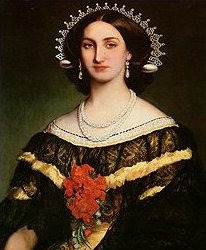
This tho is Empress Charlotte of Mexico, an Habsburg princess, with a traditional Lombardy hairstyle! (most of the north of Italy, except for Piedmont and Turin, was under Austrian rule by then and until 1861)
This is not typical of Venice, and really Milan/Lombardy and Venezia/Veneto are two separate entities, still I thought that it could be a good way to fit a variation of this, shaping it more like an Inquisition eye... And that's my research pit of today.
All the sources I found are in Italian, unfortunately, but I found this website that explains it in english, with a lot of photos!
#fashion history#italian fashion#historical fashion#lombardy#hairstyles#historical hairstyles#italy#the bethroted#down in the research pit#greypetrel#the novel is not bad if you aren't forced to study it at school#a good historical novel there's a lot of christianity but not in the nasty sense#just a lot of “be kind and demure and God will provide for us all worry not”#and a great former villain INNOMINATO AMORE MIO#Fun fact: it's the novel that defined Florentine dialect as the official Italian language when Unification happened#OK I'LL STOP#did I have this post in my mind since this July when I made this illustration? PROBABLY
22 notes
·
View notes
Text

Did I watch three documentaries on the Ottoman Empire to better understand Galeb's background? Yes..... yes, I did. 🤣 In my defence, I knew nothing about the Ottoman Empire, I know of it but I couldn't tell you anything about it. 😂
8 notes
·
View notes
Text
It's funny to me to see people complain about either Romano or Veneziano for being superficial or inaccurate characters as if the comic wasn't literally called useless Italy. They were doomed to be stupid and cringe from the start
#frambles#like listen i am italian myself and i have thoughts about them as well#but have you taken a look at Italian history esp pre-unification i dare y'all to portray that clusterfuck accurately in a dumb comic
7 notes
·
View notes
Text
I haven't thought about lovestruck since the app closed and even before then I'd given up on it but I'm starting to novelize Soulmates I FUCKING MISS ATLAS
#I MISS HIM#starship promise#atlas molniya#i finally figured i could modify the story enough where it wasnt straight up plagiarism if i switched to fantasy#(i picked steampunk style italian unification era specifically for a MECH DRAGON to replace the Promise)
10 notes
·
View notes
Text
It's 1:42 AM and I'm cooking so hard with my Italian City State OCs. Y'all aren't ready for my next fic.
#do you like Brutus and Achilles and wish we got to see more Tuscany aside from that one paragraph where Genoa mentioned that he died?#You probably didn't ask for that but we're doing it anyways#gosh i love italian unification-era hetaila#hetalia
0 notes
Text
Why was the U.S. government quietly investigating IRFF and Massimo Trombin?

The International Relief Friendship Foundation (IRFF) was a Moonie-associated relief-oriented NGO. Massimo Trombin was European IRFF's sub-director and Italy IRFF’s director in 1998, often working with and alongside another Moonie NGO, Religious Youth Service (RYS), spending much of his time planning and working at 4 West 43rd St.
Massimo is an Italian national who, along with many other WANGO/IRFF/RYS leaders, joined the Hyun Jin / Preston schism, working now with the Global Peace Foundation.
Why was the government quietly investigating IRFF and Massimo Trombin in 1998?
Source: https://vault.fbi.gov/sun-myung-moon/sun-myung-moon-part-04-of-15/view
#massimo trombin#hyun jin moon#schism#irff#international relief friendship foundation#front organiziations#front groups#ngo#wango#rys#religious youth service#disaster relief#u.s. government#united states of america#unification church in italy#unification church in europe#italian church#european church#church members#current members#members#gpf#global peace foundation#moonies#unification church#ffwpu#family federation for world peace and unification#family peace association
0 notes
Text




THE KISS /1859/ by FRANCESCO HAYEZ
The painting is a depiction of a couple embracing one another whilesurrounded by a classical architectural setting. It was meant to epitomize the ideals of love, passion, and intensity of emotions for that era.
Hayez created this painting during a period of political turmoil in Italy, where Romantic artists sought to emphasize emotional and nationalistic themes in their works. The painting was commissioned by Alfonso Maria Visconti di Saliceto, a known Italian patriot, and was intended to symbolize the alliance between Italy and France during the Risorgimento, the movement for Italian unification.
The painting is rich in symbolism. The central figures symbolize unity and harmony, whereas the turbulent background can be interpreted as the hard times of Italian unification efforts. Hayez was influenced by Renaissance art, particularly in the composition and chiaroscuro. This influence can be seen in the careful attention to detail and the soft, almost ethereal lighting of the figures.
Despite the political undertones, the focus of the painting is on the intimate, romantic embrace between the two figures, which has made it one of the most famous and iconic Romantic paintings in Italian art.
125 notes
·
View notes
Text
For how amazing an improvement rifled muskets were over their smoothbore predecessor, it's even more impressive how little impact they had before being put up against early breechloaders simply because only the British spent enough on the required amount of training for all their troops to take advantage of it. In Crimea the Russians just don't train their troops in marksmanship, the French mostly train specialist troops in it and overall relies more on shock tactics, and the Ottomans and Sardinians presumably were involved. In the American Civil War both sides use mass armies of conscript because the US Army beforehand was like 10k guys with a few marines on top. In the Italian Wars of Unification the French, Italians and Austrians were pretty much matched. In the German Wars of Unification they had the breechloading Dreyse and that kind of shifted things forward past the relevance of rifled muskets as peak technology wherein they could dazzle us any (not that they were obsolete).
We went from round ball shot from smoothbore muskets to ogival bullets that went through two dozen complex different systems and configurations making them ten times more accurate, and in the end it impacted maybe three wars.
99 notes
·
View notes
Text
Friendly reminder to witches and pagans who want to incorporate ancestral beliefs into their practice: be mindful that a lot of modern nations and their current dominant culture are relatively new, and even the concept of a national identity is very, very modern. Modern borders may not necessarily reflect the world your ancestors lived in.
For example: immigration documents record my great-great-great grandparents immigrating from Germany in the 1870s. But my ancestors weren't German -- they were Bavarian. They were both born in the country of Bavaria and fled to the USA after the unification of the German Reich (no, not that one). They wouldn't have spoken German as a first language -- they would have spoken Bavarian. And if I wanted to incorporate their culture into my practice, I would need to narrow my search to Bavarian folk practices. Other regional practices from other parts of modern Germany wouldn't have been relevant to my ancestors.
There's a similar situation with another great-great-great grandfather, who immigrated in the 1850s iirc. He was from Lombardy, near Milan, and was fleeing the unification of the Kingdom of Italy. He probably very much did not identify as Italian.
And on the other side of my family we have a Northern English line we've been able to trace back to the 1100s, and those ancestors from the Middle Ages probably identified as Northumbrian rather than as English. My "Scottish" ancestry probably actually comes from that same line, because Northumbria was a border state between England and Scotland.
Modern resources like Ancestry.com and other genealogy sites will use modern country names and borders, which can sometimes give us false understandings of where our ancestors actually came from. This is why it's important to do your own research and fact-check outside the ancestry documents.
#and of course ancestral links arent required for pagan practice#but if you want to#this is my advice#ancestor work#ancestor worship#ancestors#ancestry#genealogy#history#european history#mine#witch#pagan#witchblr#paganism#paganblr
414 notes
·
View notes
Text
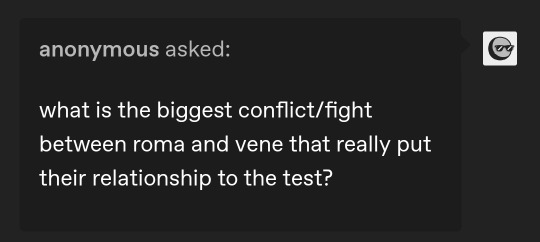
Please ignore the fact I accidentally posted this and then deleted it okay anyways
These two have had a myriad of personal conflicts over the years. They had a difficult relationship as children and then spent the rest of their adolescence and early adulthood separately. They interacted, of course, and they saw each other as brothers, but that was it. We are related by blood, but I don’t see you as FAMILY family. If that makes sense. But if I had to pick their biggest fight, it would be:
Tl;Dr: Emotions were running high and unchecked after Italian unification, leading to a blow-out fight when Romano announced that he was moving to America for a little while.
I need to provide some context and explain my headcanons, so this might be a long one kjdfgk I hope it makes sense! Also, a warning because my Feli isn't all that canon-compliant ;; but I think he's a bit more accurate to the northern attitudes of the time
There's a common headcanon within the fandom that Romano was entirely against unification and resisted it from the start. I think this is a bit of an inaccurate and an over-simplified perspective. By the early and mid 1800s, there were many instances of uprisings against absolutism in Southern Italy, which strove for more liberal ideals. The revolutionaries wanted a constitutional monarchy, or even a republic. Through their uprisings and the creation of a secret, revolutionary network across the peninsula, revolutionary ideals began to spread throughout and inspire others.
This is of course a gross oversimplification of the history, but I’m bringing this all up to illustrate the idea that Romano was starting to grow tired of the “status quo”, and was desperate for a change. Unification wasn’t necessarily what he had in mind at first, especially when we consider that he and Feliciano were pretty distant at this point in time. However he soon got swept up in the fervor and optimism of the patriots, and he began to believe in their vision. He believed in a future where he could finally be truly independent- free to call the shots and live his life freely without the worry of being tossed around and claimed by other European powers. He believed in a future where, maybe, he could have a family again. To fix what was broken between him and Feliciano. Romano may come across as quite crude, but he’s a very passionate man. Someone who loves and craves so deeply, to the point where his heart/imagination can far outrun him.
So imagine the betrayal felt when he realized that unification wasn’t working in his favour. He was practically discarded, and seen as “lesser than” his northern brother. His brother, who treated him as an oddity, and had an air of moral superiority over Romano. They kept each other at arm's length, as though they were roommates forced to endure the other, rather than two brothers sharing a home. Disillusioned and hurt, Romano felt like a fool for believing in a dream that didn’t come true.
Feliciano struggled with many emotional grievances, which Romano wasn’t privy to. He lost his long-time husband/partner just a few decades prior, and instead of taking the time to confront the grief, he picked himself back up and turned his attention towards independence and unification. He threw himself head first into uprisings, wars, political negotiations, and rallies- all to achieve this patriotic goal of forming “Italy”, and perhaps to distract himself from the loss (though he won’t admit it). He also thought, maybe foolishly, that his life would get better after unifying with his brother. That he would have a family again, that he wouldn’t feel so alone, that he would love and be loved and they could hold hands and skip happily into a field of sunshine and rainbows and everything would be okay–
What should have brought them together, they both realized, seemed to drive a deeper wedge between them. The reality was that they were incompatible. They couldn’t stand each other. To Feliciano, Romano was nothing but an uncivilized brute who only complained and never wanted to work, and lived to insult him every day. To Romano, Feliciano was a pompous, stuck-up elite asshole who refused to acknowledge the very real pain and disillusionment of his new, southern citizens. Both brothers felt as though everything- all the blood, sweat, and tears- was just a massive waste.
As you can imagine, it was a VERY tense and unhappy household for many reasons. They began to argue. A LOT. Fights that were far uglier than the scraps they had as children. It got to a point where they couldn’t even stand to be in the same room as each other.
It all came to a head, however, when Romano announced that he was leaving. He had his motives, reasonable ones too, but Feliciano didn’t see that. All he saw was his no-good, lazy brother abandoning him and their country after all the effort they put into creating it, leaving him with all the stress and work while he galavants off to America. This was the straw that broke the camel’s back. The announcement devolved into an explosive fight. Things were said that, to this day, haven’t been fully forgiven. With all the anger and tension, they probably threw in a few good punches as well. Romano eventually left, and Feliciano thought to himself “Good riddance”. However as time wore on, they couldn’t help but think about the other, wonder how they were doing, and reflect on how they parted ways.
Things were still a bit tense when Romano returned, and they didn’t acknowledge the fight for a while. However, they began putting a bit more effort into rekindling their relationship. It took some time, and it wasn’t an easy journey, but they’re in a much healthier place now than before. They’re glued at the hip, they share everything, they know every little quirk and detail about the other, and they’ve begun to love each other as family (though teasing and head-butting is a common occurrence).
If you asked them back then if they would go through unification, they would be incredibly iffy. But if you asked them now, they would likely say yes. They wouldn't trade their brother for anything in the world.
#historical hetalia#hetalia headcanons#aph romano#hws romano#aph italy#hws italy#aph veneziano#hws veneziano#temmie thoughts#I hope this is coherent oml ghfdkjgd to think there was a time where I was actually good at writing#now I have brain fog lmao#but yea I love the itabros and they drive me up the wAAALLL I love exploring their relationships#things were hard but they worked through it and now they're a family and they love each other and and an dan dan dand and and
156 notes
·
View notes
Text
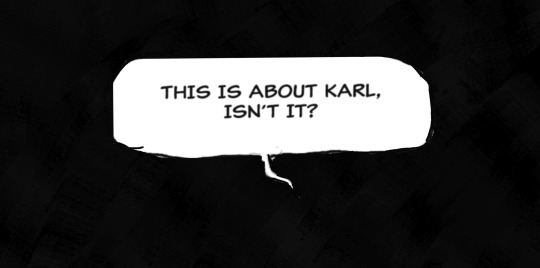



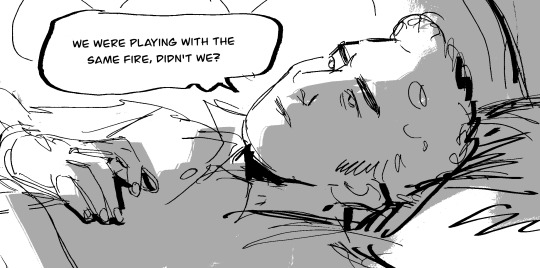
// ASK RISORGIMENTO ITALY CONTINUES! // ASKBOX OPEN AGAIN
Risorgimento, meaning "resurrection," was the term used as early as the 1840s to describe the aspirations to Italian independence that would finally be achieved between 1859 and 1870.
107 notes
·
View notes
Text


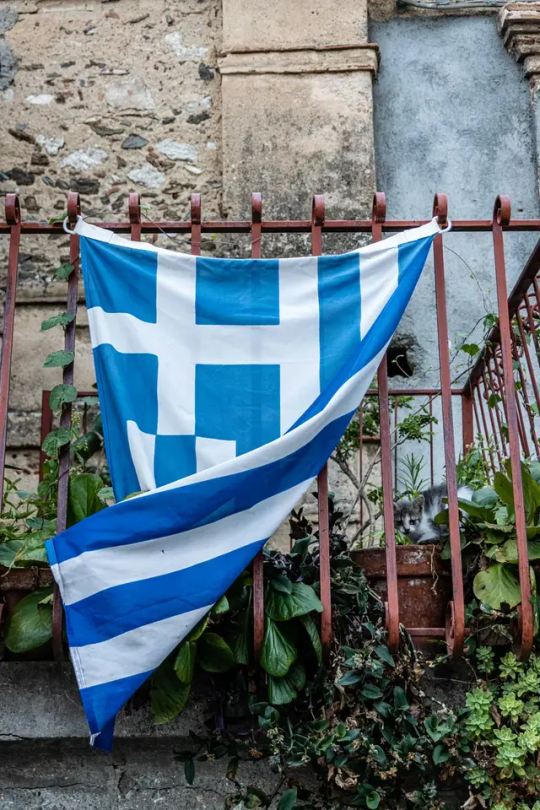
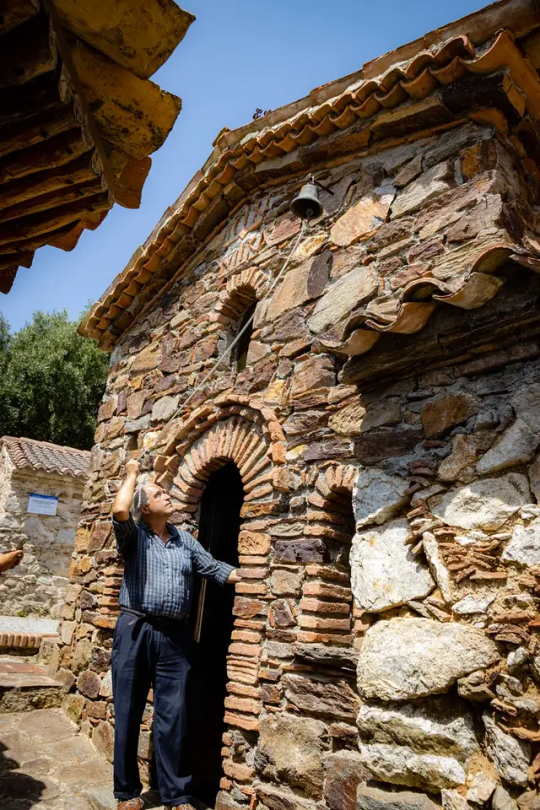



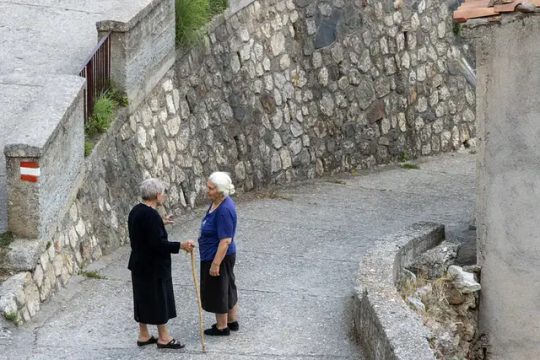
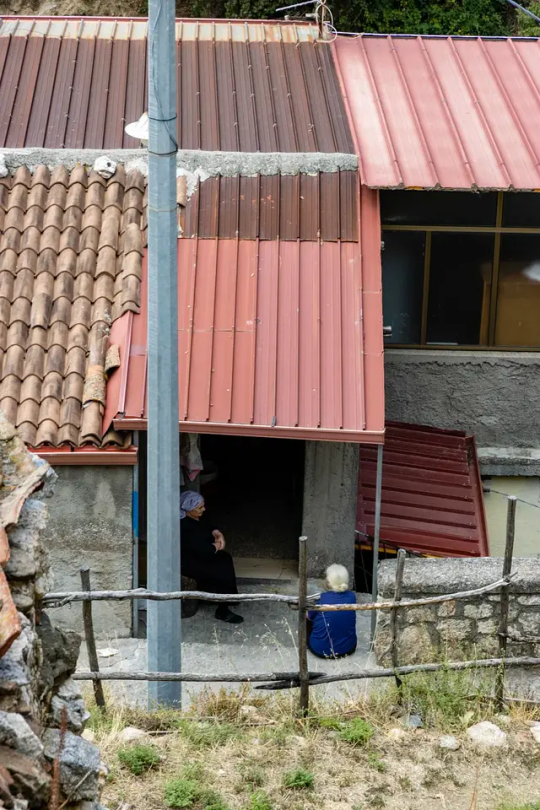

Gallicianò, Calabria, Italy
Gallicianò, in Calabria, is the only remaining original Greko-speaking settlement in the Aspromonte Mountains. Locals have not been forced to move or resettle on the coast like other Greko settlements.
Italian as we know it today was not always spoken throughout Italy. The Italian language did not become the staple language until well into the end of the 19th Century during the process of Italian unification, or the Risorgimento. Until then, the Italian peninsula was made up of Italo-Romance dialects and smaller minority languages that were differentiated by region and historical influences. Once unification was complete, the Tuscan dialect was ushered into power as the official language of the Italian nation. This became the beginning of the modern end of the Greek language in Calabria, or what it is known today as Griko.
WHY SHOULD IT MATTER?
There exists today a tiny enclave of Greek-speaking people in the Aspromonte Mountain region of Reggio Calabria that seem to have survived millennia...perhaps since the Ancient Greeks began colonizing Southern Italy in the 8th and 7th Centuries BC. Their language is called Griko. They survived empires, invasions, ecclesial schisms, dictators, nationalistic-inspired assimilation, and much more. Griko is a variety of the Greek language that has been separated from the rest of the Hellenic world for many centuries.
To help bring more perspective, Greek was the dominant language and ethnic element all throughout what we know today as Calabria, Puglia, and Eastern Sicily until the 14th Century. Since then, the spread of Italo-Romance languages,
along with geographical isolation from other Greek-speaking regions in Italy, caused the language to evolve on its own in Calabria. This resulted in a separate and unique variety of Greek that is different from what is spoken today in Puglia.
A BRIEF HISTORY
The struggle for the survival of Hellenism after antiquity is typically associated with Ottoman occupation in the Eastern Mediterranean, not the Italian peninsula. Few history books I read growing up ever mentioned any type of Greek history or presence in Italy after the glorious era of Magna Graecia. But to dig a little deeper means that we must look at what happened to this ethno-linguistic group after antiquity.
There are many theories or schools of thought regarding the origin of the Greko community in Calabria. Are they descendants of the Ancient Greeks who colonized Southern Italy? Are they remnants of the Byzantine presence in Southern Italy? Did their ancestors come in the 15th-16th Centuries from the Greek communities in the Aegean fleeing Ottoman invasion? The best answers to all of those questions are yes, yes, and yes. This means that history has shown a continuous Greek presence in Calabria since antiquity. Even though different empires, governments, and invasions occurred in the region, the Greek language and identity seemed to have
never ceased. Once the glorious days of Magna Graecia were over, there is evidence that shows that Greek continued to be spoken in Southern Italy during the Roman Empire. Once the Roman Empire split into East (Byzantine) and West, Calabria saw Byzantine rule begin in the 5th Century. This lasted well into the 11th Century and reinforced the Greek language and identity in the region as well as an affinity to Eastern Christianity.
What's even more fascinating is that Calabria was apparently a Byzantine monastic hub of sorts. There were over 1,500 Byzantine monasteries in Calabria and people today still remember and adore those saints. Even though Byzantine rule ended in Calabria in the 11th Century, the Greek language continued to be spoken while gradually declining in the region with the spread of Latin and a process of Catholicization. The modern-day commune of Bova may give some insight into the history of the language in the region. In subsequent centuries after Byzantine rule, Bova became the heart of Greek culture in Calabria as well as the seat of the Greek church in the region. It is important to note that the liturgical language of the region was Greek until 1572 when Bova was the last in the region to transition to Latin.
Not much is known of what took place between the end of the 16th Century and the Italian Risorgimento in the 19th Century, but there are a couple of details to mention. First, due to multiple invasions and piracy, much of Calabria's coastal population moved into the mountainous interior. According to Olimpia, the isolation and geography of the Greko communities in Calabria definitely worked to the advantage of preserving the language over centuries. We can also possibly conclude that occasional migrations of Greeks to Calabria from the Aegean could have taken place in the 16th and 17th Centuries in response to the Ottoman invasion. And according to Tito, there is even evidence that a 17th Century mayor of Bova wrote poems in Griko.
Even though the Greek language had already been in great decline since the departure of the Byzantine Empire in Southern Italy and the spread of Catholicism with Latin liturgy, the language seemed to have quietly survived several centuries in the mountains of Calabria.
TODAY
Once the Risorgimento finally took place, the modern Italian language finally arrived in Calabria at the end of the 19th Century. The Italian language that arrived was essentially the Tuscan dialect that was chosen as the national language. The Italian language has only been spoken in Calabria for around 100 years.
Due to the complexities of the Risorgimento and the new multifaceted Italian state (Northern Italy vs. Southern Italy), there was a new wave of mindsets that was ushered into Calabria and surrounding Southern Italian regions. This deeply affected the Greko community and language.
The shame and embarrassment of speaking Griko began in the 20th Century and it intensified during the Fascist movement. The mentality of 'we must be Italians' affected the way the Griko community raised their children.
Until the 1960s, there were no roads, electricity, or plumbing to most of the Greko villages. When the schools arrived, Italian was the taught language and Greko was learned at home. There was no government assistance back then for the Greko language. Italian government did not care about this language.
Furthermore, unlike other minority languages in Northern Italy, the Greko community was not located in a border region. The Italian government did not pay much attention to the Greko language or did not help preserve it also because its speakers did not pose a threat of secession or independence much like the Northern Italian minorities or the Basques and Catalans of Spain.
All of these factors have led to the current status of the Greko language as it remains in severe decline and near extinction.
Written by John Kazaklis
Photos by Giuseppe Cillis
Follow us on Instagram, @calabria_mediterranea
#Gallicianò#calabria#italy#italia#south italy#southern italy#mediterranean#greek#byzantine#byzantine art#griko#italian#landscape#italian landscape#europe#landscapes#mountains#mountainscape#mediterranean sea#seascape
27 notes
·
View notes
Photo

Revolts and revolutions in Italy under the Restoration
“Atlante storico”, Garzanti, 1966
by cartesdhistoire
The Congress of Vienna divided Italy into ten largely reactionary states, against which the secret society of Charbonnage, originating in the Kingdom of Naples in 1807, opposed itself. The "Carbonari," mainly from the middle classes, whose growth had been favored by French domination, claimed inspiration from the constitution of Cádiz promulgated by the Spanish parliament with Napoleon's agreement in 1812.
Revolutionary movements erupted first in Naples in the summer of 1820, followed by Palermo, which became the scene of a genuine civil war. The insurrection spread to Piedmont from March 1821; the insurgents were defeated in Novara on April 8, with Austrian assistance, leading to ruthless repression until October. Order on the peninsula was only fully restored in early 1822 by the Austrian army. Severe anti-liberal repression was felt in Modena, the Papal State, and Milan. At least 3,000 patriots went into exile between 1821 and 1823.
Echoing the Parisian revolution of 1830, which had a profound impact in Italy, an uprising erupted in early 1831 in Modena, Parma, and Bologna. On March 4, the Austrian army entered the Duchy of Modena, and on the 29th, the last remnants of the insurgent army capitulated. Fierce repression followed.
Patriots were divided into two models: revolutionary and democratic or liberal and moderate. The latter, itself subdivided into two currents, one advocating unification under the pope's auspices and the other under the leadership of the House of Savoy. The revolutionary model, predominant until 1848, found its embodiment in Giuseppe Mazzini, who envisioned a popular insurrection to overcome resistance from princes and local particularisms, leading to a republic. Mazzini's activism played a significant role in shaping the Italian people's national consciousness, but the utopian nature of the insurrectional path ultimately led to a deadlock.
70 notes
·
View notes